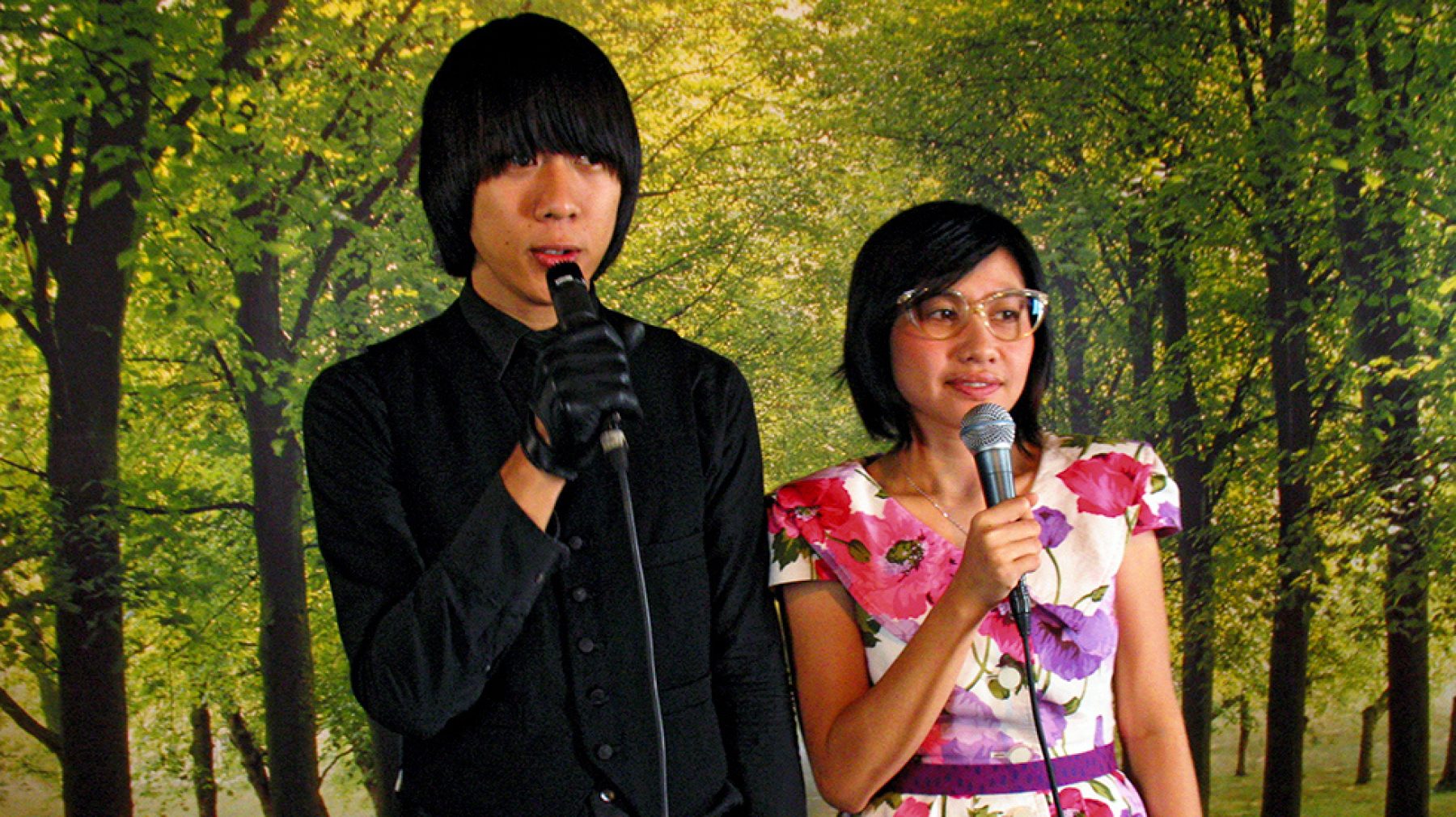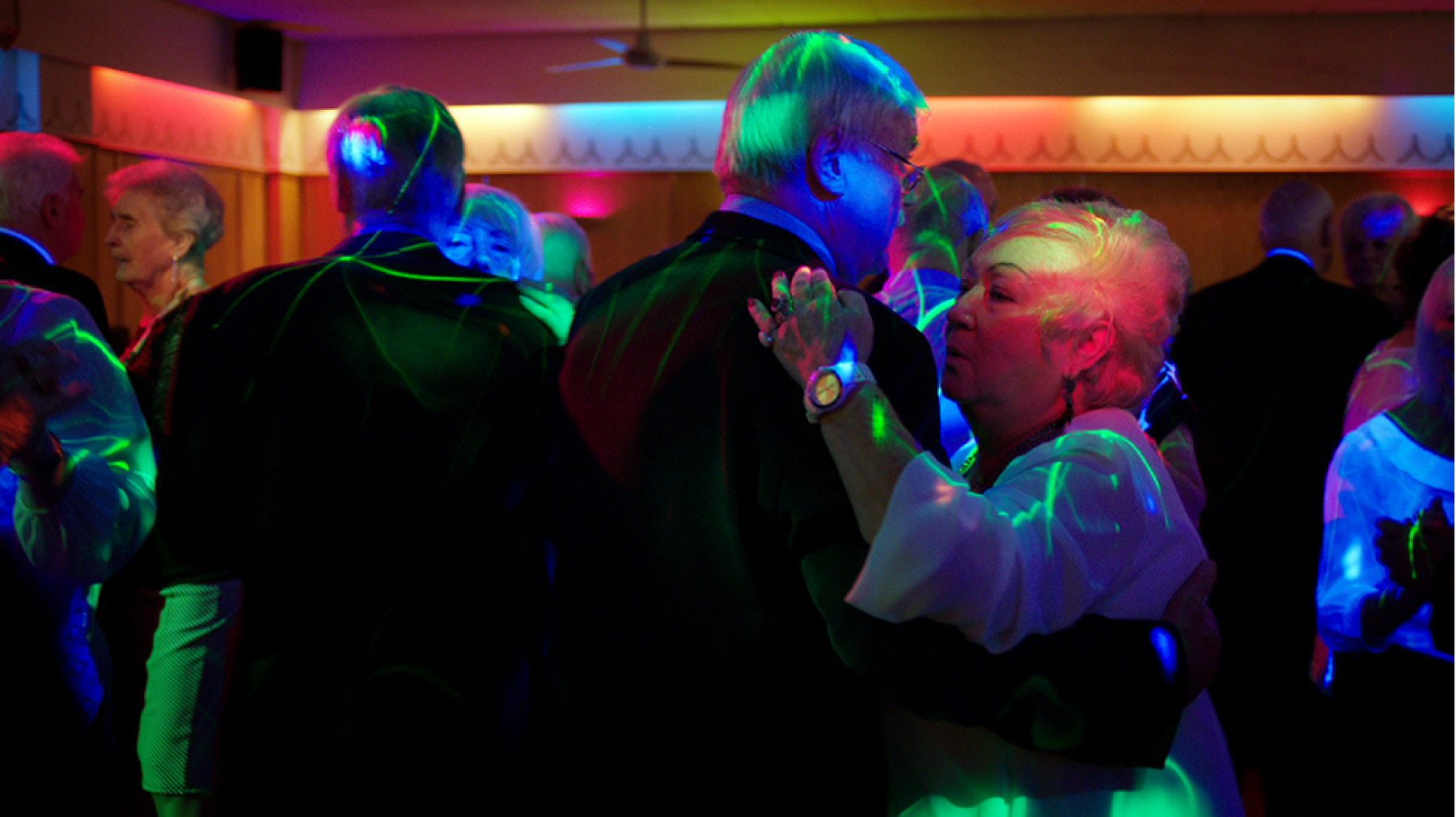This exhibition was on view from March 2 to April 21, 2016.
Phil Collins: the meaning of style

Phil Collins, the meaning of style, 2011. Still. 16mm film transferred to HD digital video; color, sound; 4 min. 50 sec.
the meaning of style features a group of anti-fascist Malay skinheads who appear to transcend reality and representation, circulating between the imaginative and literal spaces of cinema. Filmed in Penang, Malaysia, the skinheads are part of a subculture that formed in the 1990s. They have all the visual cues: shaved heads, sporting work shirts, bomber jackets, suspenders, jeans, leather boots, tailor-made pants and sweaters. But they lack the aggression that has come to define skinheads. In a series of quickly changing scenes set in an Indian Tamil cinema, a Chinese Buddhist temple, and a colonial-era mansion, for example, the youth serenely flip through vintage English magazines, listening to walkmans, and play cards. Interspersed among these contemplative moments, a confrontation transpires in the streets, a kind of enacted roughhousing. It’s a performance of the cinematic skinhead shaped by the media they absorb. Other moments include a profusion of butterflies alighting on the young men's shoulders and cheeks, and tender exchanges of clothing. A soothing, dreamlike soundtrack by Welsh musician Gruff Rhys and the band Y Niwl accompanies the images, moving the film majestically toward something that is neither fantasy music video nor an extended Ben Sherman commercial but more socially and culturally compelling, connected to the universal desire to belong while staking out zones and modes of independence.
Drawing on his belief in the power of popular culture to transcend social class, locality, and language, Collins explores ways in which subcultures and styles circulate and translate from different historical, ethnic, and social contexts. In Britain, the skinhead originated in the 1960s as a working-class subculture out of respect and admiration between Anglo and Caribbean youth. By the mid-1970s, its anti-establishment credo that that was largely articulated through progressive racial politics evolved into a nationalist neo-Nazi aesthetic. Transmitted widely by news media and Hollywood, racism eventually became for many the defining hallmark of the counter-culture style. The Malay youth co-opt the style of the former British colonial’s subculture and, bridging time and space, restore it to its original meaning united by community, fashion, and music within their South-Asian context.
Curated by James Voorhies, the John R. and Barbara Robinson Family Director.
Phil Collins
Phil Collins is a British-born filmmaker, visual artist, cultural organizer, and educator based in Berlin and Wuppertal. His diverse practice is characterized by close engagements with place and communities, which over the years have included, amongst others, disco-dancing Palestinians, fans of The Smiths across three continents, Kosovan-Albanian refugees, the youth of Baghdad, anti-fascist skinheads in Malaysia, the homeless population of Cologne, and teachers of Marxism-Leninism from the former German Democratic Republic. Rather than static portraits, the works resulting from these collaborations articulate the nuances of relations embedded in the aesthetic regimes and economies that define everyday existence, from news and politics to entertainment and shopping. Throughout, Collins upholds a commitment to myriad forms of experience across the social spectrum, and an interest in the contradictory impulses of intimacy and desire within the public sphere.
Collins’s works are represented in collections such as those of Museum of Modern Art and Metropolitan Museum of Art in New York; Tate Gallery, London; and Museum of Fine Arts, Boston. In Spring 2016 his first feature film Tomorrow Is Always Too Long (2014) will be theatrically released in Germany.
Since 2011 Collins is Professor of Video Art and Performance at the Academy of Media Arts in Cologne.
Archive
Explore more of our rich history through our archive.


